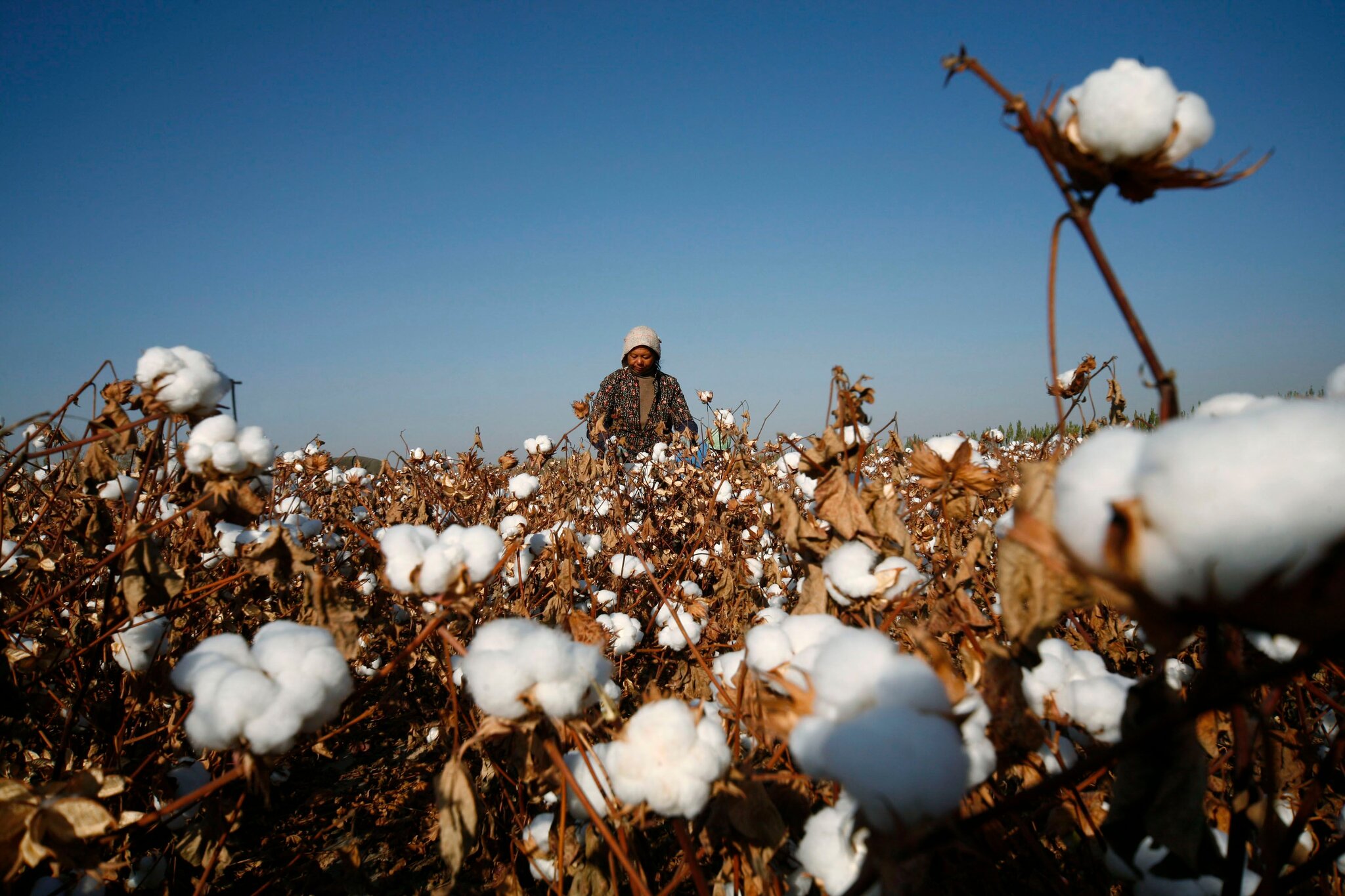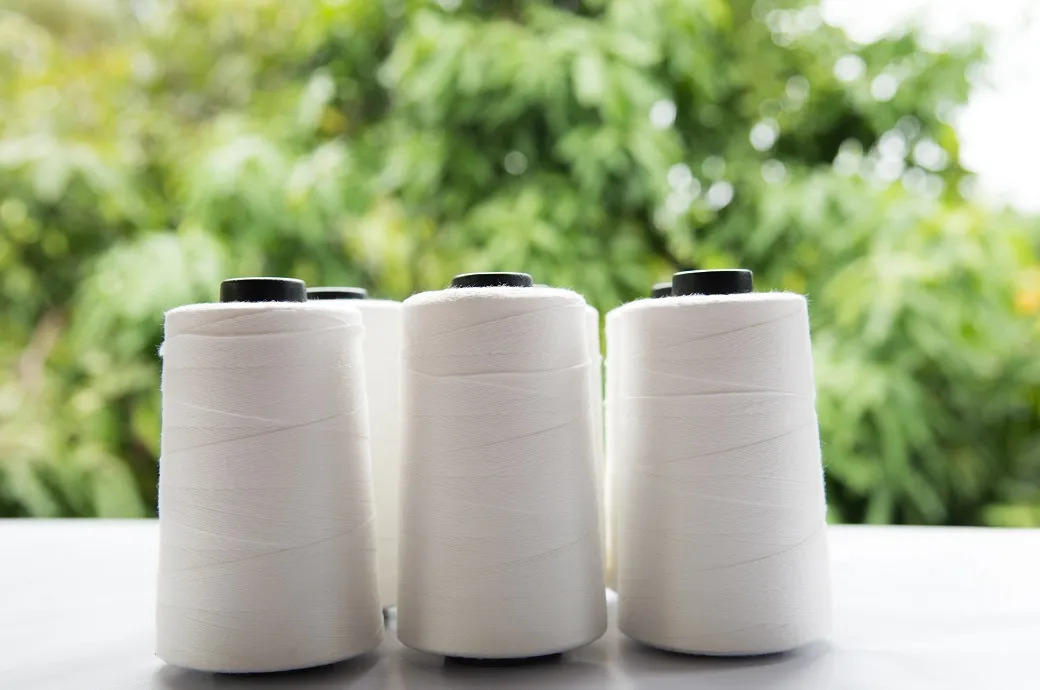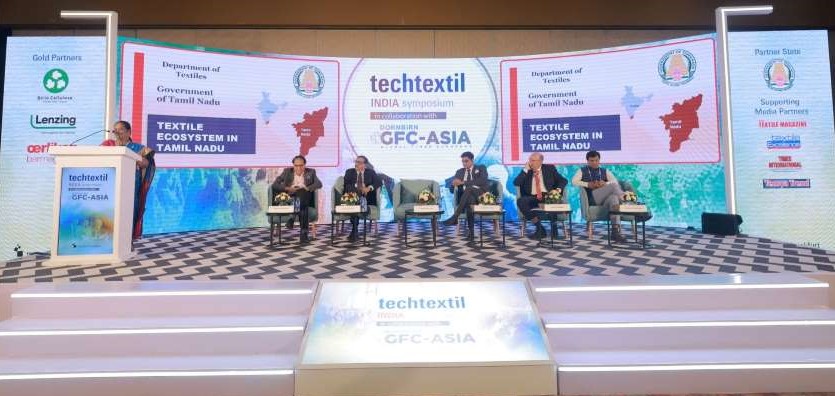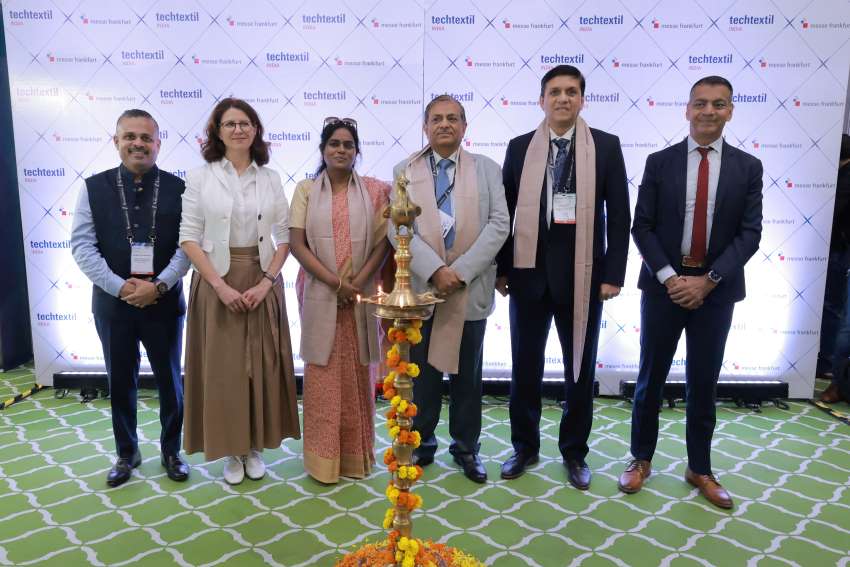FW
In view of increased expenditure towards enhanced wages and safety standards, the commerce minister of Bangladesh, Tofail Ahmed has sought higher price for Bangladeshi readymade garment (RMG) products in the global market. The prices of RMG products are not being increased though a lot of progress has been made towards safety, security and wages, he says.
Ahmed was speaking at a press conference attended by his countrymen and Dutch officials. He further said that the expenditures on the heads of workers’ wages and factory renovations cost a lot to the RMG unit owners while they were not getting the expected return against their increased investments. Though the minimum wages are $70 for RMG workers, but no one gets less than $120 that includes their monthly overtime in Bangladesh.
Ahmed observed that the current situation in the country was absolutely normal as the government handled militant activities successfully keeping trade and investment unhurt. Referring to uninterrupted inflow of foreign friends, the commerce minister said that Bangladesh was happy that friend of the country from all over the world were trooping in.
Dutch Minister for Foreign Trade and Development Cooperation Lilianne Ploumen urged all the stakeholders in global apparel supply chain to make sure that profits are divided fairly and transparently with decent prices for products. She laid emphasis on more transparency in the whole value chain as it was one of the issues that they tried to address in the conference.
Ploumen appreciated the progress made by Bangladesh RMG so far. She, however acknowledged that RMG product prices have not been increased despite factories invested a lot as part of transformation of the sector. Responding to a question, the Dutch minister said there should be decent salaries for the workers and all need to talk to each other and all partners have equal responsibility to make the sourcing sustainable and profitable.
The Cauvery unrest has had a cascading effect on the hosiery industry in the Tirupur knitwear cluster. Vehicles bearing Tamil Nadu registrations are being stopped and damaged. So truck operators from Tamil Nadu are not confident of going through Karnataka. A good chunk of the hosiery cargo from the Tirupur cluster is now dispatched to the western and northern regions of the country through longer routes via Andhra Pradesh.
But then transport charges have shot up as the distances travelled are longer. Such increases in transportation charges shrink profits. The final costs on the products cannot be increased as many of the bulk orders are taken in advance with a fixed price quotation. There could even be losses if volume is lower or the costing does not have adequate buffer to minimise unexpected losses.
In any case cargoes have to be dispatched at any cost otherwise buyers would start sourcing from other clusters in the country. Trucks are used to send cargoes due to the flexibility of dispatching consignments even at the eleventh hour and also they could be sent to any destination, both of which are not possible through train. It is going to be quite a while before trucks start passing through Karnataka as usual.
"With the Savigny Luxury Index (SLI) gaining 6.8 per cent in October, almost double the MSCI’s gain of 3.5 per cent, global luxury brands are heaving a sigh of relief. Kering outperformed the SLI, rallying 17 per cent on the back of yet another strong set of results. Gucci’s 49 per cent sales growth in the last quarter helped Kering to report a 28 per cent growth. LVMH also performed well month, climbing 10 per cent on the back of excellent third quarter results."

With the Savigny Luxury Index (SLI) gaining 6.8 per cent in October, almost double the MSCI’s gain of 3.5 per cent, global luxury brands are heaving a sigh of relief. Kering outperformed the SLI, rallying 17 per cent on the back of yet another strong set of results. Gucci’s 49 per cent sales growth in the last quarter helped Kering to report a 28 per cent growth. LVMH also performed well month, climbing 10 per cent on the back of excellent third quarter results. Burberry gained 8 per cent this month as brokers upgraded the stock in light of its recovery potential; nevertheless, the stock slipped back at the end of the month when Christopher Bailey announced his intention to leave the group in March 2018.

Watch sector also bounced back this time. Richemont expected a net profit jump of 80 per cent in its forth coming first half results, driven by demand for its watches. Cartier sales increased 12 per cent. Swatch sales in August and September had grown by 10 per cent. Another boost to the sector was offered by consortium of Hong Kong-based investment funds when it acquired just over 30 per cent of O Luxe Holdings (formerly Ming Fung Jewellery), a listed Hong Kong-based watch distributor and retailer, valuing the company at around $1 billion. Similarly, France-based Efficio Group, a company specialising in digital communications, acquired France’s largest second-hand luxury watch retailer Cresus.
M&A activity across other segments of the luxury sector also witnessed pace. Belstaff was sold to British petrochemicals company Ineos as part of the Reimann family’s progressive exit from the luxury sector. China-based Hony Capital acquired a 30 per cent stake in Mr & Mrs Italy, an Italian brand founded in 2007 and best known for its fur-lined parkas. The beauty segment recorded a number of transactions this month: US-based consumer fund Castanea acquired 30 per cent of skincare brand Tatcha; Henkel acquired US haircare brand Zotos from Shiseido and UK-based online beauty retailer The Hut acquired make-up brand Illamasqua. Last, but by far not least, US-based private equity firm Carlyle acquired a 50 per cent stake in the Millennial cult brand Supreme for a reported $500 million.
Streetwear in the lap of luxury
Streetwear is trending as demonstrated by Carlyle’s investment in Supreme, on the tail of the cult New York brand’s collaboration with Louis Vuitton earlier this year. There has been a big push amongst luxury brands in the casual segment, notably in footwear. All of this has been done to grab millennials’ attention as they have accounted for 85 per cent of the luxury sector’s growth this year, according to Bain.
The Textiles Ministry is looking at increasing the level of insurance cover for handloom weavers, a sector that’s on the government radar for job creation. The Mahatma Gandhi Bunkar Bima Yojana provides insurance to handloom weavers in the case of natural and accidental death and total and partial disability. The ministry has proposed an increase in cover for accidental death to Rs 4 lakh from Rs 1.5 lakh. In case of natural death, benefit may be raised to Rs 2 lakh from the Rs 60,000 now. The textile sector is the country’s second-largest employer.
The government released Rs 16.67 crores under the scheme in 2015-16 compared to Rs 16.39 crore in 2014-15 when as many as 5.74 lakh weavers were enrolled. The benefit is restricted to two children of the member. The government’s effort to enhance insurance for handloom weavers is a good plan. For the betterment of the class, the reform measures should include assistance for improved products, quality control, better marketing and access to markets to enable the weavers maximise the gain from the renewed interest leading to a growing market for handloom. It will improve weavers’ incomes and quality of life.
The Textile Exchange has come up with broad commitments that for the textile industry under the Responsible Wool Standard (RWS). The RWS is a voluntary global standard that addresses the welfare of sheep and of the land they graze on. As many as 15 brands have committed to the RWS. Madelene Ericsson of H&M said that her company commits to using RWS wool and the company has a long term goal to only use RWS certified wool in its products. Eddie Bauer is committed to the RWS and will begin shifting its material base to RWS-certified fiber in 2017, with a goal of being 100 per cent certified as soon as the company’s supply chain can provide RWS fiber across all categories, observed Damien Huang of Eddie Bauer.
Jesse Montano of Coyuchi observed that his company takes expert care to ensure that everything that bears the Coyuchi label is produced and processed as per strictest environmental standards in safe and humane conditions, from farm to factory to home. Thus, the company is looking forward to adopting RWS wool in its supply chain for Fall 2017. Others who have committed to RWS are Patagonia, Eileen Fisher, Tchibo, Varner, Vaude, Mountain Equipment Co-op, Deckers, Kathmandu and Knowledge Cotton Apparel.
World trade in 2016 is expected to expand by just 1.7 per cent. The 1.7 per cent growth in world merchandise trade volume will be accompanied by real GDP growth of 2.2 per cent at market exchange rates. This would be the slowest pace of trade and output growth since the 2009 financial crisis.
Trade growth was weaker than expected in the first half of 2016 due to falling import demand and slowing GDP growth in several major developing economies as well as in North America. Certain trade-related indicators have improved, including export orders and container port throughput, but overall momentum in trade remains weak.
The dramatic slowing down of trade growth is particularly serious in the context of the growing anti-globalisation sentiment. Its possible this may translate into misguided policies that could make the situation much worse, not only from the perspective of trade, but also for job creation and economic growth and development which are closely linked to an open trading system.
The way out is to build a more inclusive trading system that goes further to support poorer countries to take part and benefit, as well as entrepreneurs, small companies, and marginalised groups in all economies.
Italian textile industry show Milano Unica has changed the date of the winter show. Now it will be held in July instead of September. One reason for the change is the show had lost some ground in the last few years. So this decision means it will be held in advance of other textile events. Last year Milano Unica launched Prima MU, a small show dedicated to pre-collections. But with the September edition hot on its heels Italian fabric manufacturers were not able to handle two events so close to each other.
Though it will not be easy for companies to present their collections two months ahead of the traditional autumn event, the decision to bring the date forward is a swift response to the changes the fashion world is going through. It remains to be seen whether buyers will place any orders in July, or whether they will be simply happy to view the collections, preferring to wait before committing themselves.
Milano Unica has been created through the tradition of five Italian exhibitions, Ideabiella, Ideacomo, Moda In, Prato Expo, Shirt Avenue. The project is held twice a year and presents the finest quality products from both Italian and European textile manufacturers. The name Milano Unica represents the three essential characteristics of the textile fair, singular, exclusive, united.
Men have now grown more comfortable with the idea of incorporating spandex into their pants. Elastane (the generic term for Spandex and Lycra) has always appeared in men's activewear (including Lululemon's ABC pants) as well as in niche items, like ultra-skinny jeans . But now clothing brands from J.Crew to Uniqlo have all jumped on the flexible bandwagon and there's a really good reason. Stretch improves comfort in a way you can actually feel and it makes doing anything in your pants easier from biking to flat pack furniture shopping. The material is used in these cases because it can stretch four to seven times its initial size and return to its original form later.
Even Levi's announced their most popular and cult-favored jeans are now being produced with stretch, with 1 per cent elastane, the first change to the 501 fabric in 140 years. Levi's acknowledges this may anger denim purists, but finish technicians ensured this new fabric maintained the DNA and integrity of the original.
Men are now used to having elastane in their pants for their athleisure garments. Traditional pant sellers now need to incorporate it to maintain the same level of comfort. Retailers of rigid clothing are feeling the pressure to adapt their clothing and make them more comfortable, as that is driving sales and eating away at the profits of non-stretch clothing.
The pant's cuts do not change, and depending on how much stretch there is, they look very similar as non-stretch pants. Levi's claims that the pants look entirely similar to non-stretch 501 jeans and one only feels the difference when he puts them on.
GTex is being held in Pakistan from September 28 to 30. This is a textile machinery show. This is the largest and the most successful event of its kind in the region with regard to textiles, garments, embroidery, digital printing, chemicals, yarns and brands. For visitors of the textile industry from all over the world, such as manufacturers, buyers, retailers, importers, investors and decision makers, this event offers every year optimum possibilities to come into contact with real experts with the aim of exchanging experiences.
It has become one of the world’s best sourcing platforms in Pakistan. As many as 97 companies with 399 brands are participating in the expo. About 67 foreign delegates from European countries and China have also displayed their products in the exhibition. More than 15,000 visitors are expected during the three day expo. With live demonstrations and B2B meetings a deeper idea of materials, production methods, new technologies and machines can be obtained, which can open up new business contacts and networks to joint ventures.
Product groups are brands, chemicals, clothing, designers, digital printing, dyes, embroidery, energy, fabrics, garments, graphic systems, home textiles, leather, packaging, plastic, series, textile machinery, textiles, yarns.
The handlooms sector in Orissa that was facing a crisis due to poor demand for cotton lungis and towels for the last several years has received a new lease of life with the production of linen and mercerized cotton fabrics. The textiles and handlooms department is now creating awareness among local weavers to produce linen and mercerized cotton fabrics to meet the high demand and get better remuneration.
Weavers of Khurda, district had carved a niche for themselves in the cotton garments sector of the state in the post-independence era. Among the most sought garments across the state were cotton lungis, saris and towels produced by local weavers. The said garments even had a good market in states like Tamil Nadu, West Bengal and Madhya Pradesh.
However, mass production of cotton garments in textile mills at Coimbatore, Surat and Mumbai had dealt a death blow to Khurda’s handlooms sector in the 90s. Better quality and low price of machine-made clothes had virtually wiped out handloom products of local weavers. To revive Khurda’s handlooms sector, the textiles department has recently introduced production of linen and mercerized cotton fabrics in Bolgarh and Jatni areas. The regional textile department office is now offering linen and mercerized cotton threads at low prices, new looms, training facility and bank loans to entice weavers to produce new varieties of fabrics.
The textile department is also getting linen threads from Kolkata and mercerized cotton threads from Coimbatore in Tamil Nadu to meet the demand. The textile department has proposed to offer raw materials to weavers and collect finished products from them for marking through its nodal agency Bayanika.












